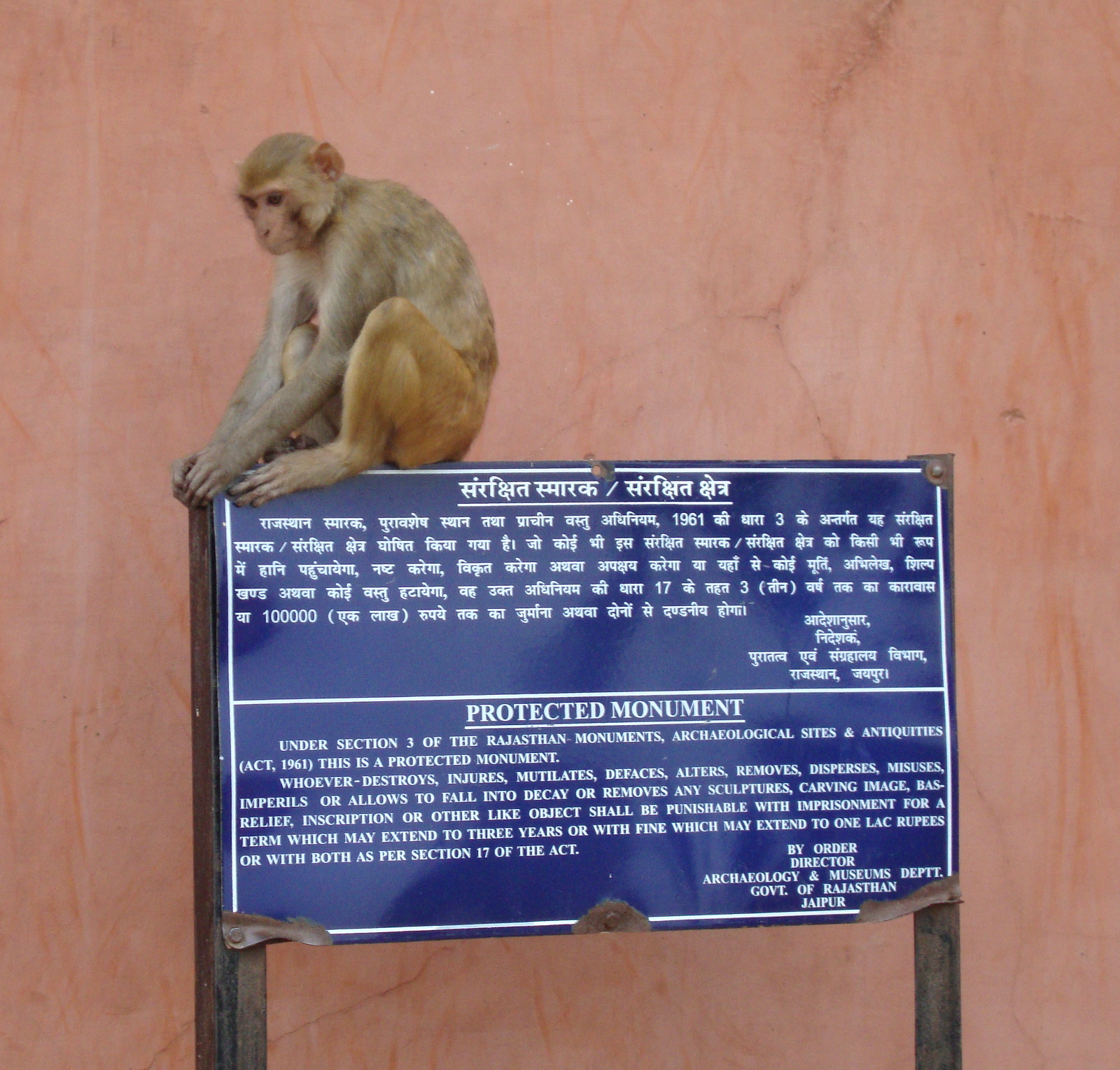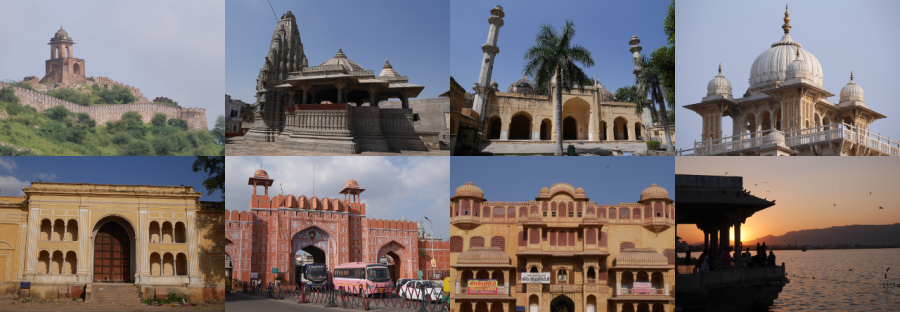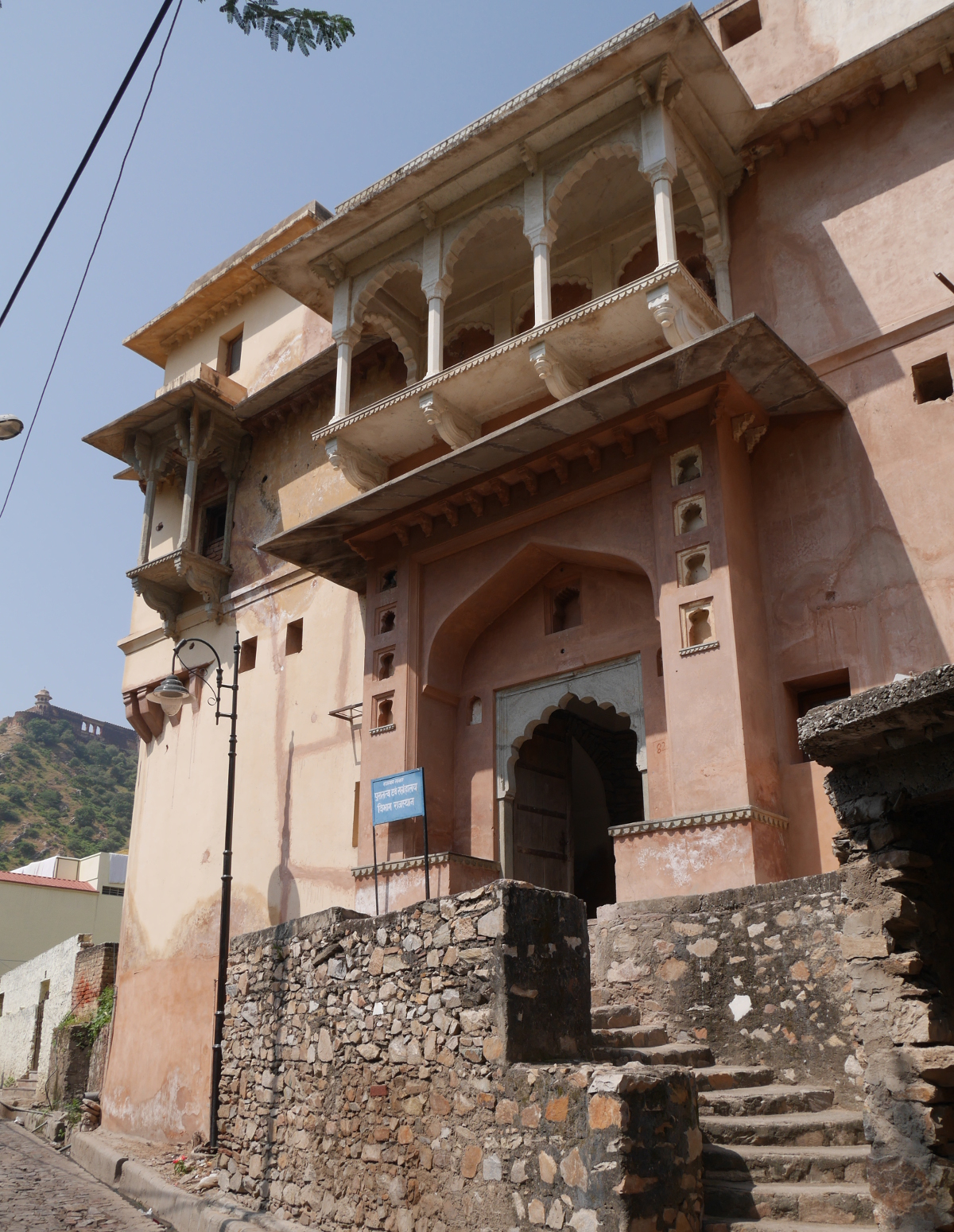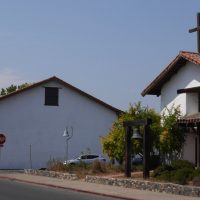
A rhesus macaque sits on a sign identifying the Sun Temple at Galta-ji (Jaipur) as a Rajasthan state protected monument.
Last month, the Wikimedia Foundation staged a contest called Wiki Loves Monuments 2016. Users uploaded photos of national- and state-level protected monuments in participating countries (including India), and a jury would select the best photos in certain categories.
On September 1, I found out about WLM 2016 when I looked at Wikimedia’s most popular website, Wikipedia. A banner below the search bar announced: “Photograph a monument, help Wikipedia, and win.” I was delighted. Although I held no illusions that any of my photos would win a prize, I felt as if this contest had been made for me, and I for it. I’d spent the past year visiting all the protected monuments in Jaipur I could find. WLM 2016 gave me a reason to visit more of them. I went to some I had never seen before, and I also returned to some familiar monuments to take better pictures expressly for contribution to WLM 2016. In all, I uploaded 31 pictures of 19 different monuments, all but three of which are in Jaipur.
Wikipedia keeps state-by-state lists of the protected monuments in India. There are two lists for each state: one for the monuments protected by the Archaeological Survey of India (ASI), and the other for those under the jurisdiction of the state archeological departments. These lists are, unfortunately, rather muddled. Each monument has a distinct identifier, assigned by Wikipedia, identifying the state in which it is located and whether it is protected by ASI or the state. The monuments are organized by identifier, rather than a more sensible district-by-district arrangement. The state-level lists include only those monuments that are listed on the ASI site. (This is at least the case for Rajasthan.) The reason for this is that these are supposedly the only monuments that are recognized at the national level, but this distinction seems dubious to me. The Rajasthan state-level list for some reason repeats several monuments also on the ASI list. In past years, users had uploaded and tagged pictures of the wrong monuments. Two different ASI monuments were illustrated with pictures of the very modern Birla Mandir, which was consecrated in 1985 and has no archeological significance.
Some of the confusion in the Rajasthan state-level list is due to the official list. Some monuments have non-standard names or spellings. Others are not described clearly enough to be identifiable. I am almost certain that one of the monuments in Jaipur that even made it onto the Wikipedia list, “Cenotaphs on Station Road,” does not exist anymore. The site indicated as a cremation ground on an old map is now occupied by modern buildings.
The one thing that disappointed me about WLM 2016 was how incomplete the state-level list was for Rajasthan. I went out and photographed several attractive state-protected temples, but I couldn’t upload their pictures because they weren’t on Wikipedia’s purportedly official list.
But I can upload them on my own website. So here they are, Internet! These are some of the state-protected monuments of Jaipur that WLM 2016 missed. All of them are in the old capital Amber.






Suzan Logan
Great pictures!